One of the best things about succulents is their many different colors and fun textures. One of them that doesn’t get a lot of mention because of their difficulty level are fluffy succulents. Old man cactus, old woman cactus, hairy cacti, and more have to be watered in a very specific way
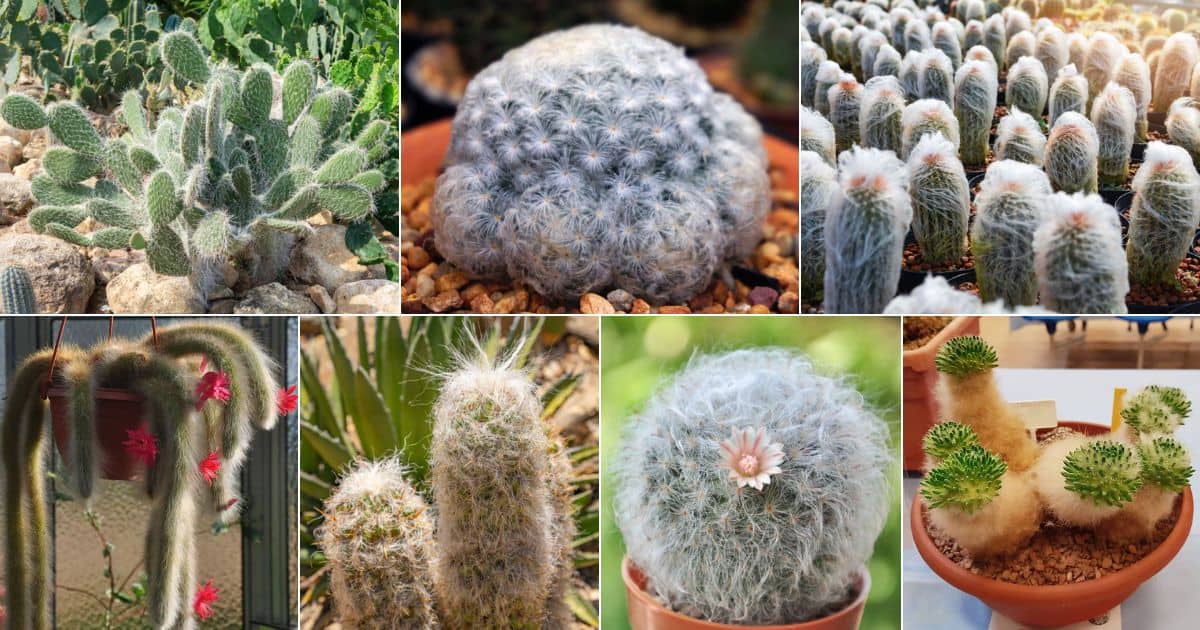
The best way to water any furry cactus is bottom watering, where the water doesn’t touch the hairs at all. The tiny glochid hairs that make the furry cacti look so cuddly hold on to water very easily and can lead to rot faster than saying supercalifragilisticexpialidocious.
It’s high time that these fluffy plants finally had their time in the spotlight!
Jump to:
1. Cephalocereus senilis
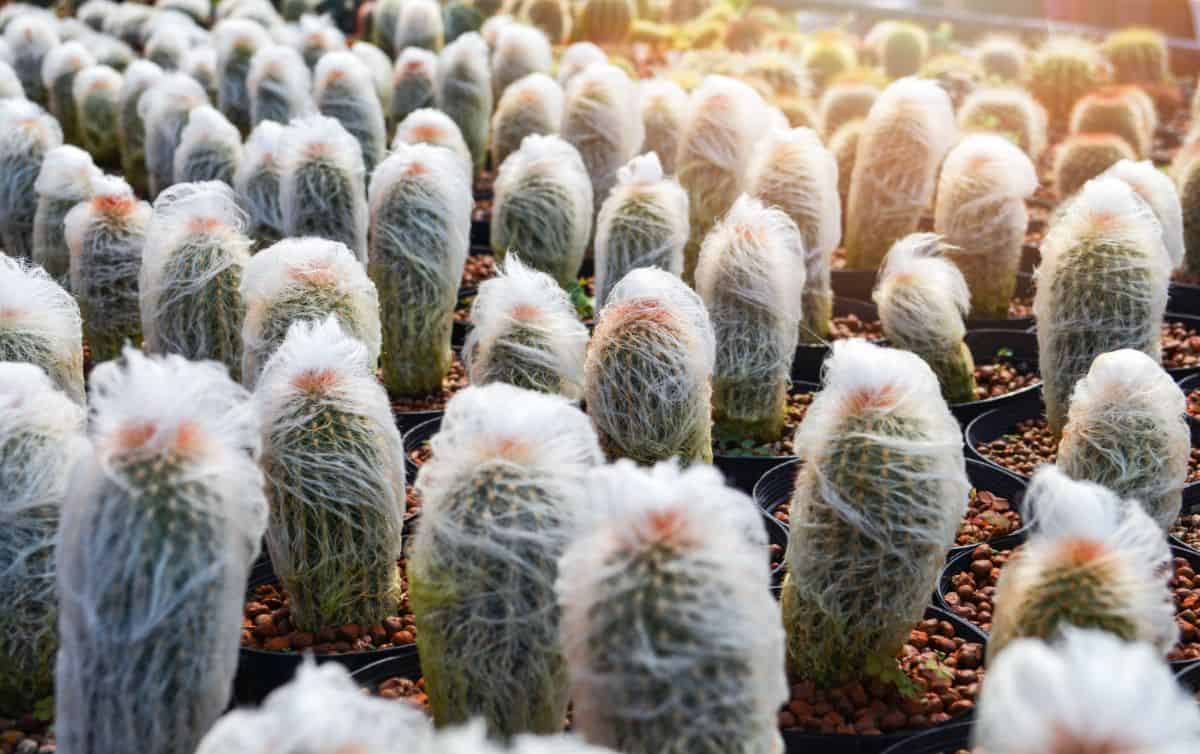
Buy it from:
The old man cactus is a favorite thanks to how closely it resembles the aging hair of an old man. On top of that, the amount of hair on the cactus makes it look as though it is a piece of felt! This cactus can handle down to hardiness zone nine, does well in more desert environments, and enjoys a typical succulent watering pattern. When on a solid water schedule, this species can grow up to seven inches a year! The blooms can vary slightly in color, but they are tubular and more coral in color.
2. Espostoa lanata
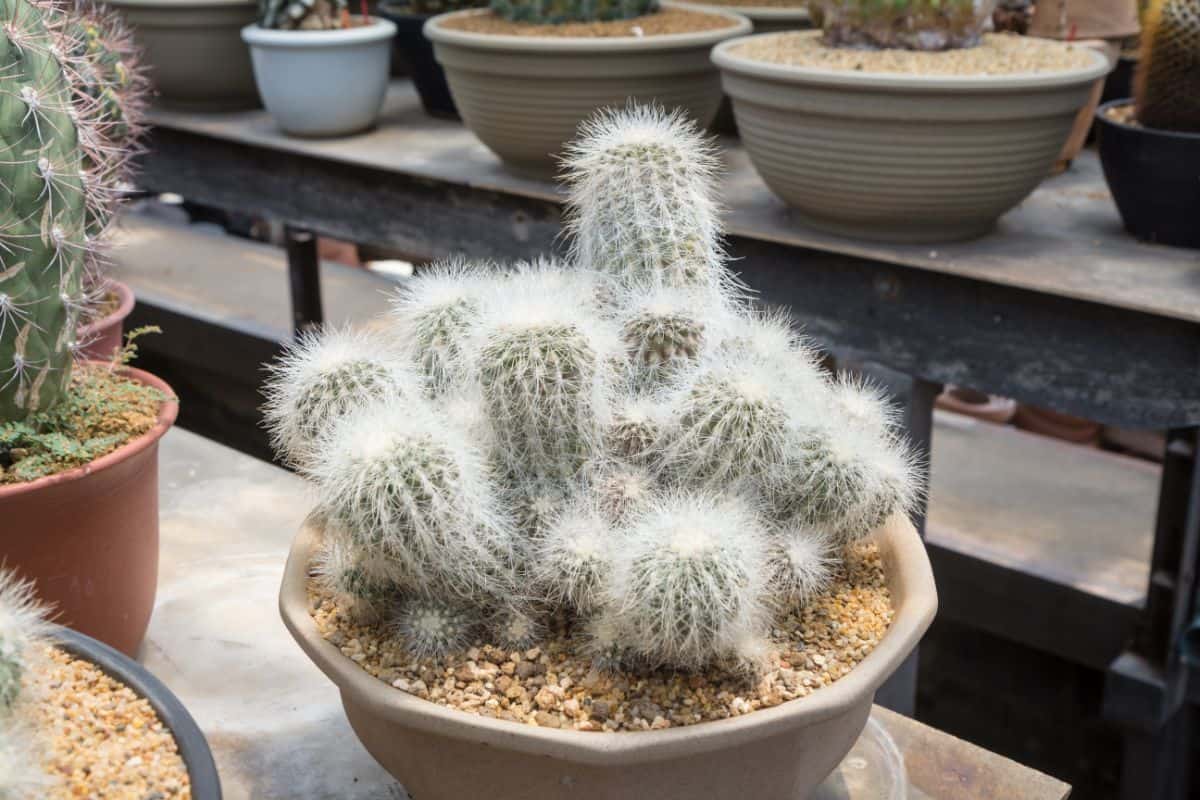
Buy it from:
The Peruvian Old Man Cactus is a joy to watch grow because of how the hairs stick out straight from the body of the cactus when they are young. The reason the hairs stick out is that instead of fine glochid hairs, the ‘hair’ on the Peruvian Old Man Cactus is made up of spines! The care and grow tips for this species are the same as the Old Man Cactus. The other difference, aside from the spines, is that the flowers are a gorgeous violet.
3. Espostoa melanostele
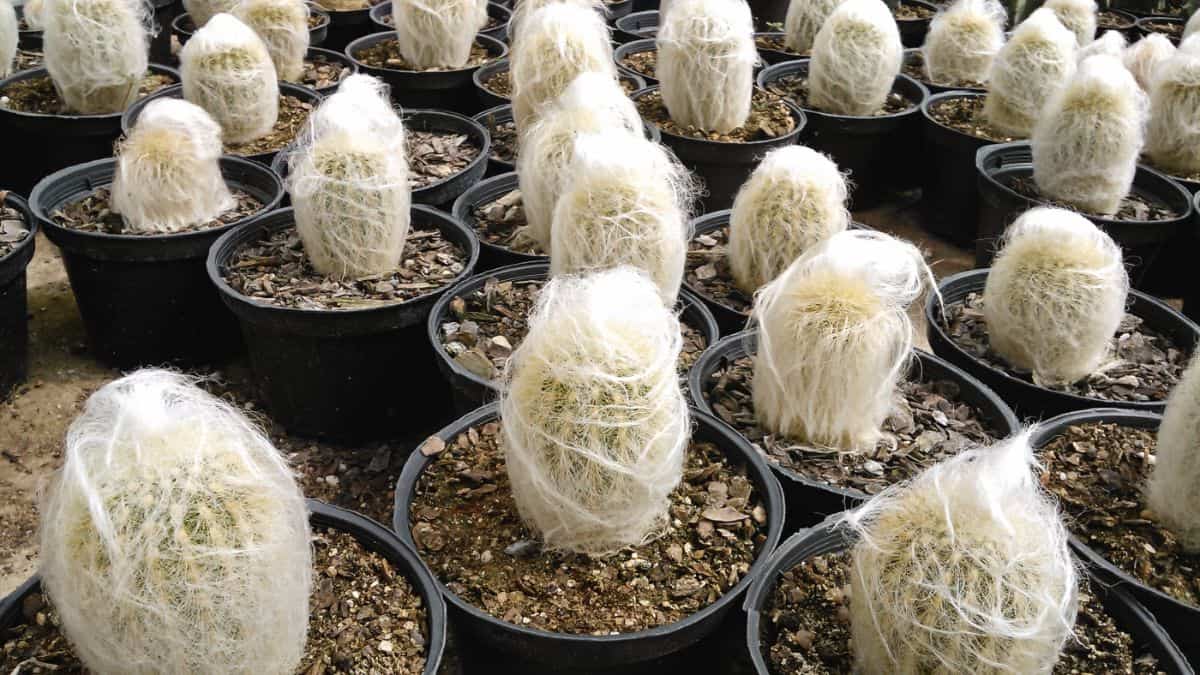
Buy it from:
The Peruvian Old Lady cactus is a special specimen because among the spines is the thick wooly hair that puts the Old Man Cactus to shame. They can handle the same hardiness zones, although they do best in Zone 10. While they are rare bloomers, when they do, the blooms are a few inches long and a beautiful white. The blooms are only going to come out when it’s dry, however, because they are sensitive to dampness.
4. Mammillaria plumosa
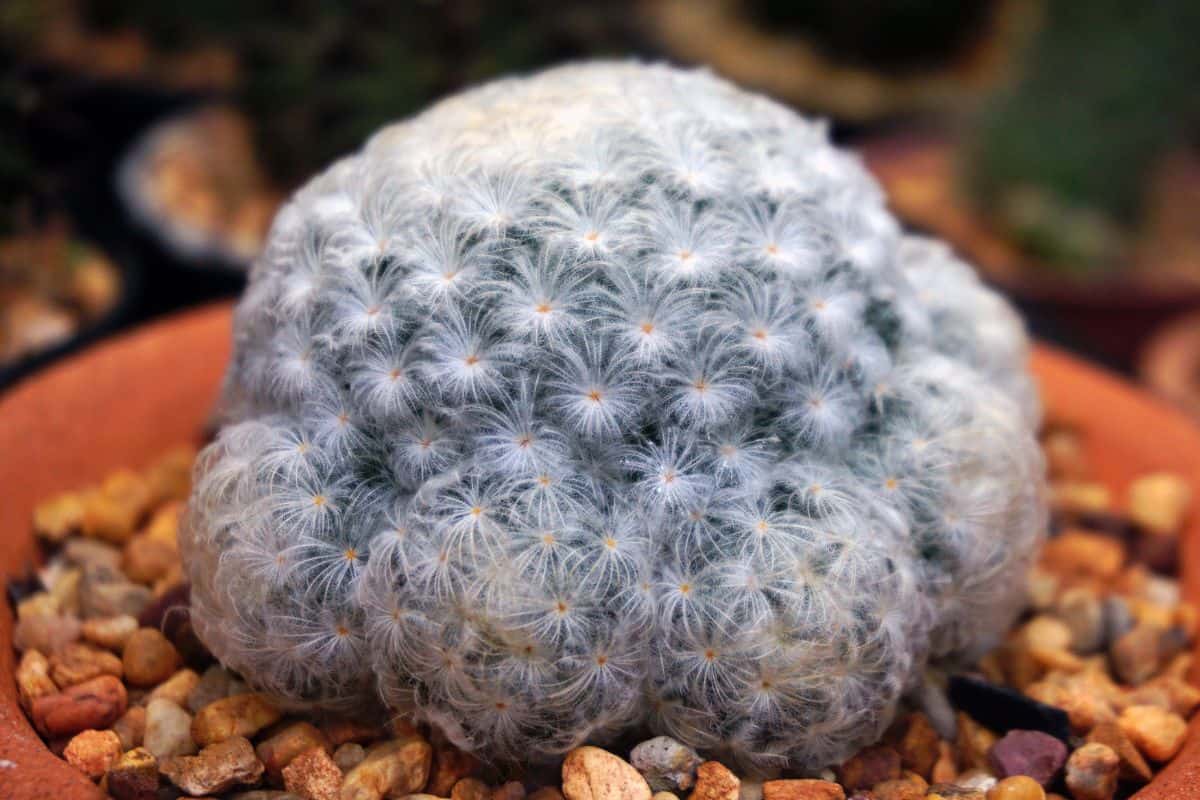
Buy it from:
Please note that while this species is beautiful and one of the softest to see and touch, it is illegal to collect M. plumosa from the local environment. When bought from growers, you may find this species referred to as the Feather Cactus. The glochids that surround the areoles are shaped like downy feathers. With shimmering white flowers against the feathery background, it is easy to see why this is such a popular species. In their natural habitat, they grow along limestone outcroppings and can handle up to hardiness zone nine.
5. Cleistocactus winteri subs. Colademononis
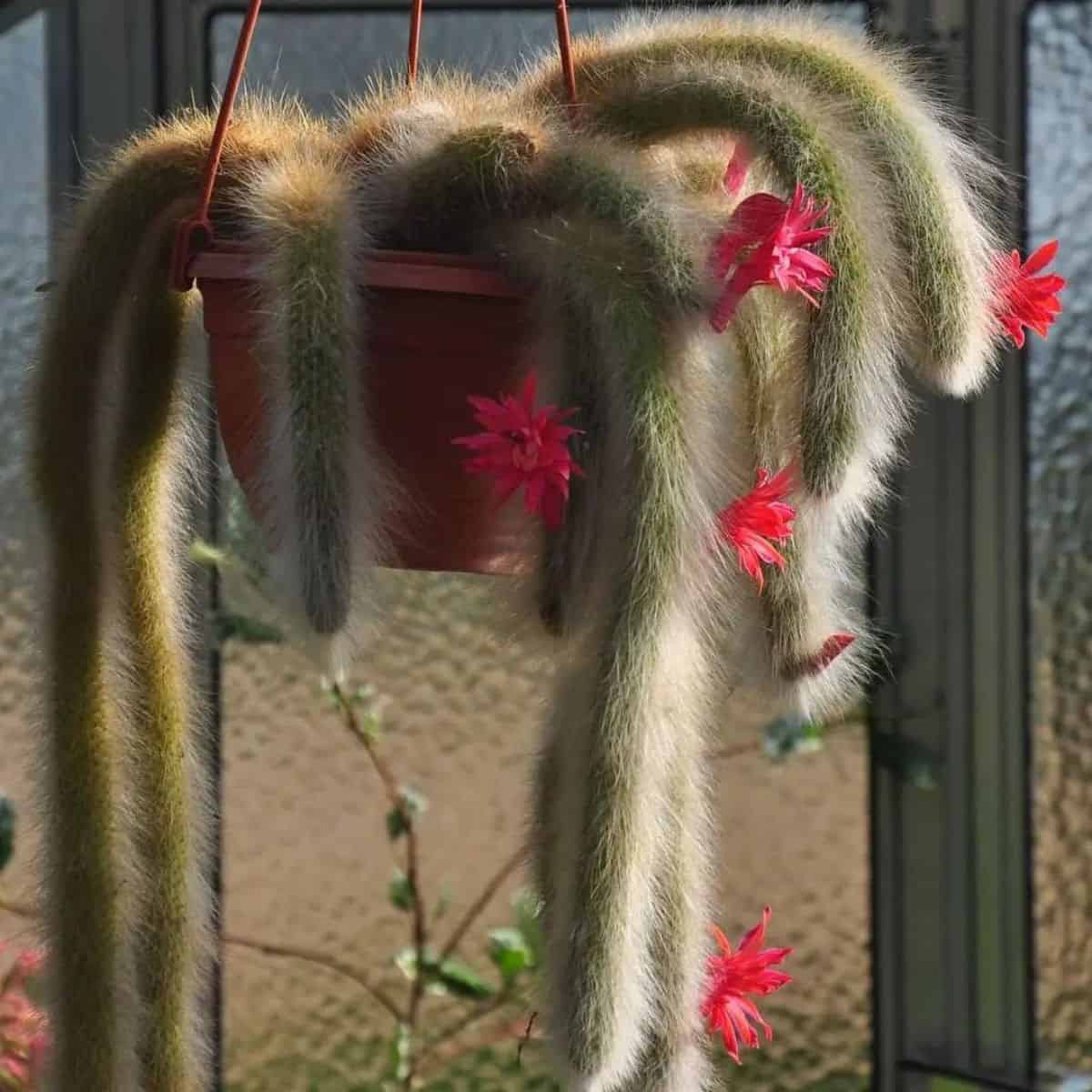
Buy it from:
One of the most beautiful succulents on this list is Monkey’s Tail cactus. Each stem can get up to eight feet long, and they are two inches around. Long, fur-like hair grows along each tail and can be very dense. The hair is also very soft! For a cactus, that is.
Normally, this species grows on stone and will easily branch from the base. The flowers will appear all over the stems, which, if you have a heavy flowering season, will turn the stems a crimson color from base to tip!
6. Cleistocactus strausii
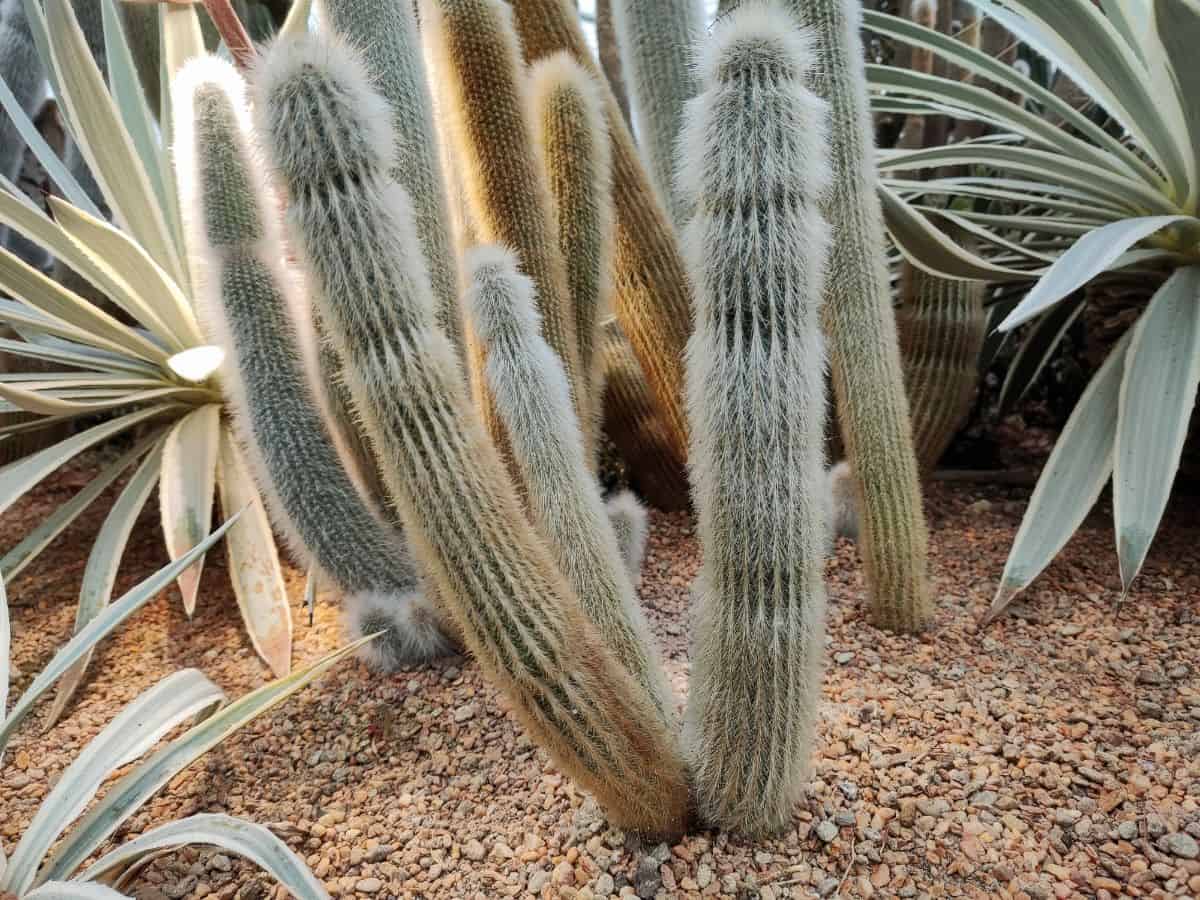
Buy it from:
The woolly torch cactus is another great addition. Most other-haired cacti tend to lose a lot of their hair as they grow older, leaving bald patched all over. This isn’t so with the Wooly Torch. Large mound-like forests of this columnar cacti grow tall and are covered with soft hairs. They tend to do best in zone 10, and their normal environment tends to be in the high mountains of Bolivia and Argentina. It grows best in loose soil with regular watering and minimal shade. The blooms can and will occur all over, which makes this cactus look like a wooly purple torch.
7. Mammillaria bocasana
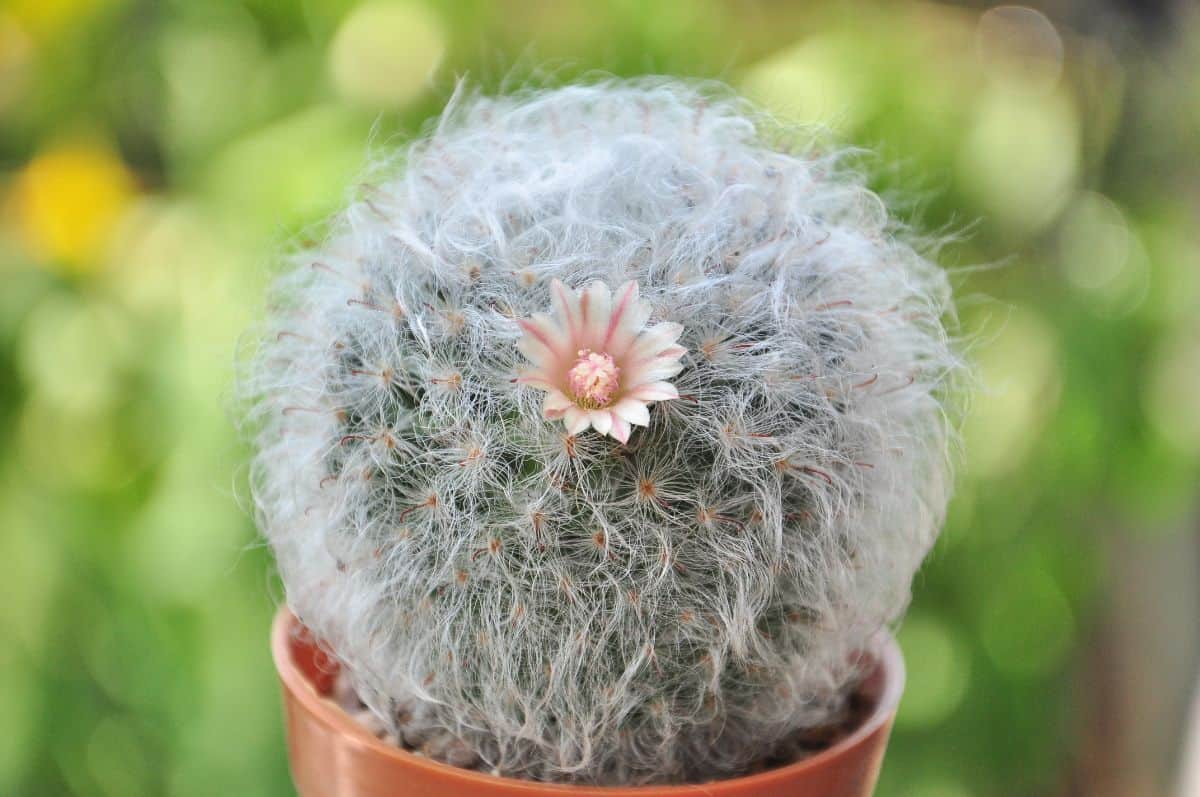
Buy it from:
The powder puff cactus is an interesting ball of spines and hair. It looks almost like the puffballs that are used in crafting, just a little bit more spikey. It could be considered a fishhook type of cactus thanks to the curl at the end of the spines. Different types of Powder Puff cactus are going to have different colors of blooms, from vibrant pinks to gentle whites and yellows. They do best in rocky soil with drier temperatures since their natural environment is the deserts of zone ten.
8. Austrocylindropuntia lagopus
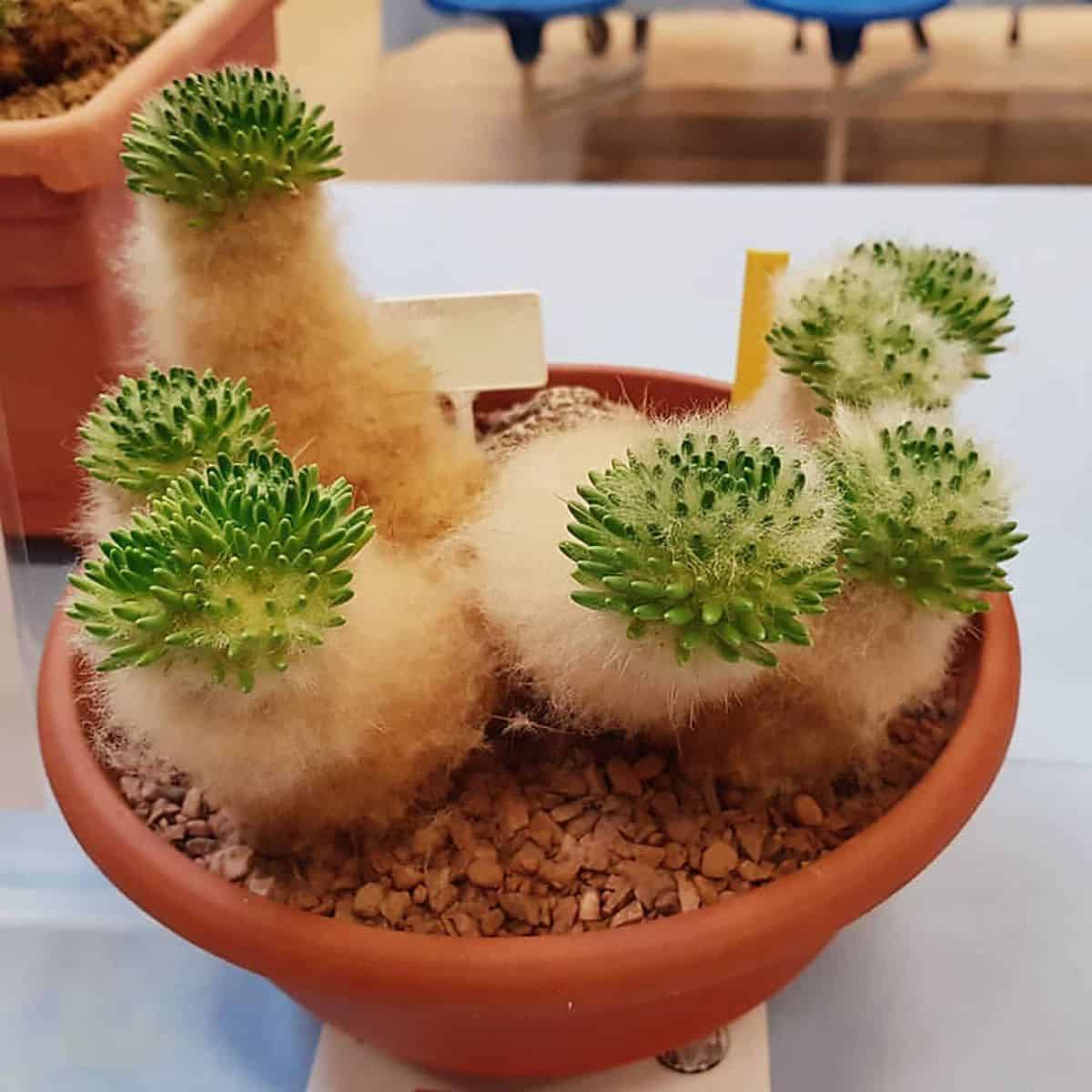
These fluffy little gems are also sometimes called Hare’s foot because of how fluffy and low to the ground they grow. The entire stems are covered with hairs, and the top of each cottony mound had green buds that pop out above the fluff. Their natural environment is large spans of dry desert where they can form two-foot-in-diameter clumps with flowers that turn into edible prickly pears.
9. Opuntia polyacantha var. erinacea
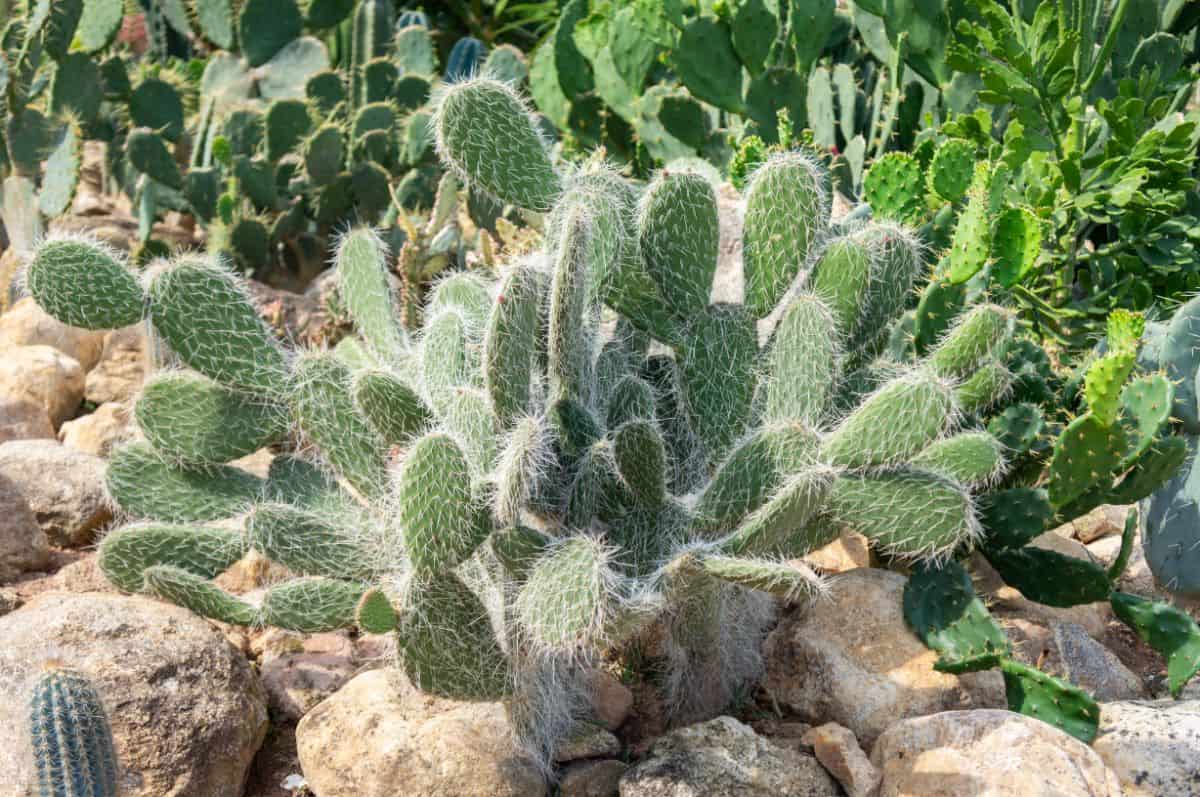
The Grizzly Bear Prickly Pear reminds me of the old fruit song from the Jungle Book: Big spiney paddles with spiny fruits make you watch out for that bear paw! The normal range for this species is along the deserts of California and Arizona. The flowers can be many different colors, but the most prominent is a bright yellow. They survive very well in hardiness zone 10 and don’t have to worry as much about water remaining on the spines or hairs.
10. Oreocereus celsianus
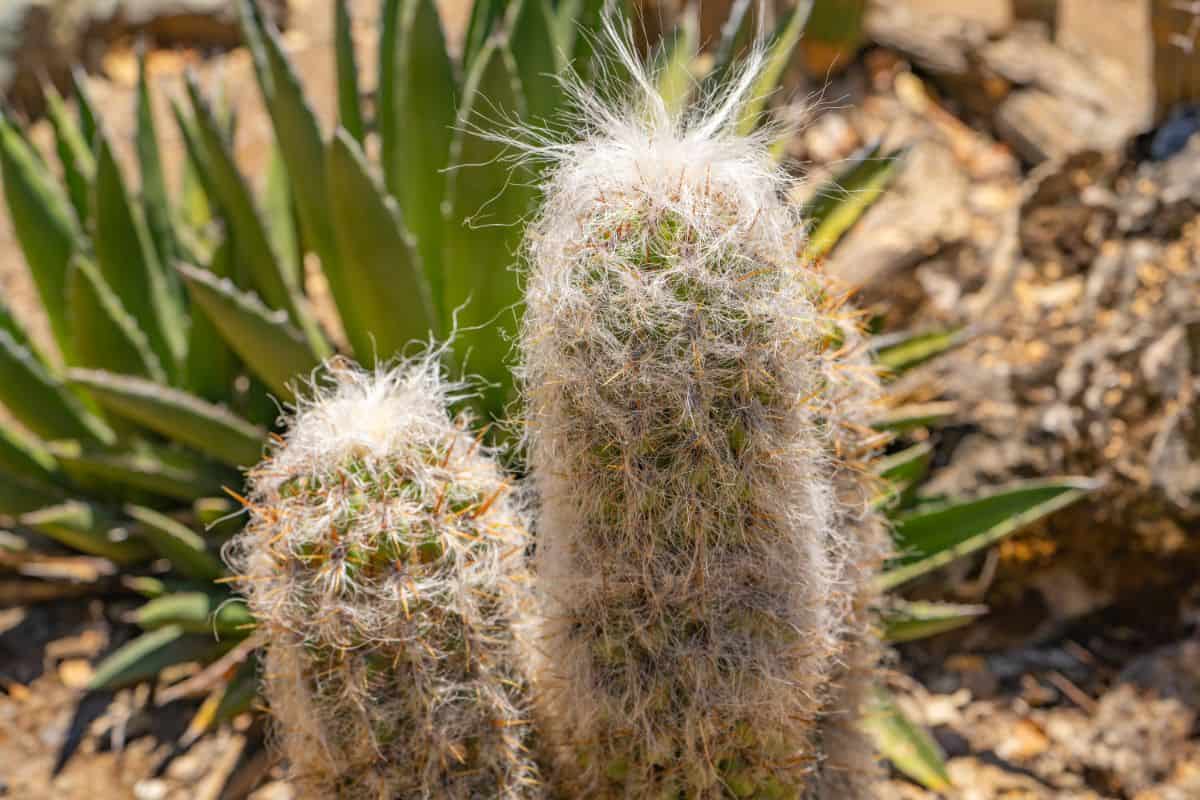
Buy it from:
Old Man of the Andes is another very wooly type of cactus. One of the best ways to grow this type of columnar cactus is to keep it in a good-sized pot as it gets more mature. This will make it easier to bottom water, so you don’t have to worry about the hair getting wet. This one can withstand colder temperatures with a hardiness zone of eight, and the flowers themselves are rare but beautiful. This type of cactus is going to grow best in rocky soil without much shade as it is used to being the tallest thing around in its natural environment.
Conclusion
If you are ready to jump into a bit more advanced succulent care, then try out one of the wooly cacti that have been covered here. They are a great joy to have in any garden, especially because the blooms contrast s brightly with the wool of the cactus.
Many, if not all, of these species, are very hardy to cold and to intense sun. While studies are still continuing, it is thought that the hair provides additional warmth from the desert cold and also protects their deep green skin from the harsh rays of the sun.
As long as you are careful about watering around their hairs, you will find that these cacti are fun and intriguing additions to your succulent army.
Happy Planting!

